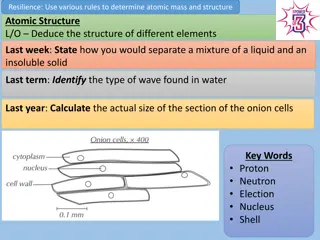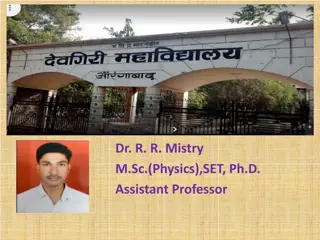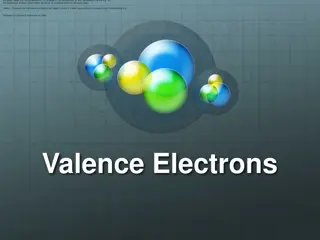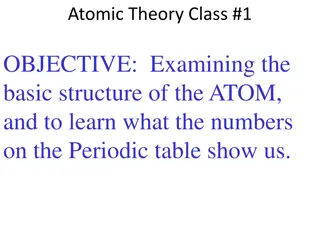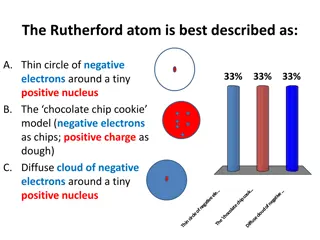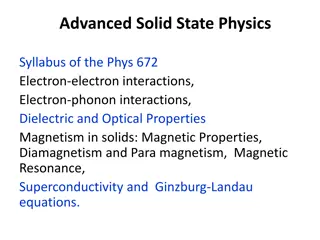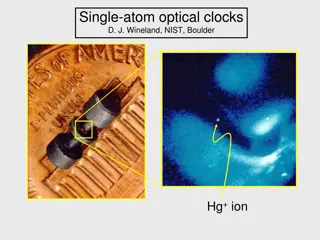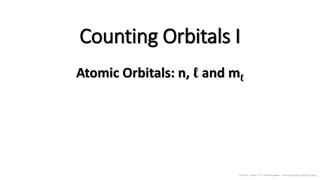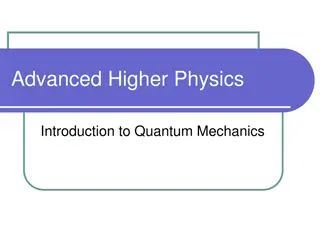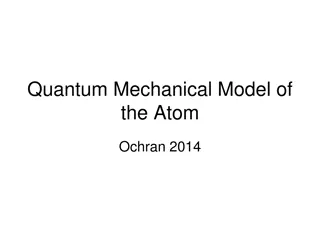Understanding Atomic Structure: Electrons, Energy Levels, and Historical Models
The atomic model describes how electrons occupy energy levels or shells in an atom. These energy levels have specific capacities for electrons. The electronic structure of an atom is represented by numbers indicating electron distribution. Over time, scientists have developed atomic models based on experimental evidence, from Dalton's indivisible atom to Thomson's plum pudding model and Rutherford's nuclear model. Neils Bohr further refined the model by introducing electron orbits around the nucleus in shells. Chadwick's discovery of neutrons added to the current atomic model. Test your knowledge with tasks and diagrams provided in the content.
Download Presentation

Please find below an Image/Link to download the presentation.
The content on the website is provided AS IS for your information and personal use only. It may not be sold, licensed, or shared on other websites without obtaining consent from the author. Download presentation by click this link. If you encounter any issues during the download, it is possible that the publisher has removed the file from their server.
E N D
Presentation Transcript
Week 2 The Atomic Model Electronic structure The electrons in an atom occupy energy levels. These are also called shells. Each electron in an atom is found in a particular energy level. The lowest energy level (innermost shell) fills with electrons first. Each energy level can only hold a certain number of electrons before it becomes full. The table below shows the maximum number of electrons that fit on each shell. Writing an electronic structure The electronic structure of an atom is written using numbers to represent the electrons in each energy level. For example, sodium contains 11 electrons so the electronic structure will be written as 2,8,1. This shows that there are: 2 electrons in the first energy level 8 electrons in the second energy level 1 electron in the third energy level. You can work out the electronic structure of an atom from its atomic number (proton number). This is because the number of protons in an atom equals the number of electrons in an atom. The diagram below shows the first 20 elements and their electronic structures. You will need to be able to write the electronic structure of any of the first 20 elements (hydrogen to calcium)
Electronic structure diagrams You need to be able to draw the electronic structure of any of the first twenty elements (hydrogen to calcium). In these drawings: the nucleus is shown as a black spot each energy level is shown as a circle around the nucleus each electron is shown by a dot or a cross. The electronic structure of some elements 2
Test yourself Task 1. Answer the following questions. Task 2. Match the elements to the correct atoms! One element is not shown. 3
Discoveries leading to the current atomic model Ideas about atoms have changed over time. Scientists developed new atomic models as they gathered new experimental evidence. John Dalton published his ideas about atoms in 1803. He thought that all matter was made of tiny particles called atoms, which he imagined as tiny spheres that could not be divided. Nearly 100 years later, J J Thomson carried out experiments and discovered the electron. This led him to suggest the plum pudding model of the atom. In this model, the atom is a ball of positive charge with negative electrons embedded in it - like currants in a Christmas pudding. In 1909 Ernest Rutherford designed an experiment to test the plum pudding model. The evidence from his experiment suggested a new model for the atom, called the nuclear model. In the nuclear model: the mass of an atom is concentrated at its centre, the nucleus the nucleus is positively charged Niels Bohr adapted Rutherford's nuclear model. Bohr did calculations that led him to suggest that electrons orbit the nucleus in shells. The shells are at certain distances from the nucleus. Further experiments led to the idea that the nucleus contained small particles, called protons. Each proton has a small amount of positive charge. In 1932 James Chadwick found evidence for the existence of particles in the nucleus with mass but no charge. These particles are called neutrons. This led to another development of the atomic model, which is still used today.
Test yourself Task 1: Fill in the gaps using the key words below. The discovery of the electron led to the ___________ _____________ model of the atom. Before the discovery of the electron atoms were thought to be tiny spheres that could not be divided. Rutherford and Marsden s alpha particle scattering experiments led to the plum pudding model being replaced by the ________________ model. ___________adapted the nuclear model by suggesting that _____________ orbit the _____________ in shells. The theoretical calculations of Bohr agreed with experimental observations. Later experiments led to the idea that the positive charge of any nucleus could be subdivided into a whole number of smaller particles, each particle having the same amount of positive charge. The name _______________ was given to these particles. In 1932 the experimental work of ______________ provided the evidence to show the existence of _______________within the nucleus. Electrons Neutrons Proton Chadwick Nuclear Bohr Plum pudding Nucleus Challenge: The diagram shows the plum pudding model of an atom of carbon and the current nuclear model of an atom of carbon. Compare the position of the subatomic particles in the plum pudding model with the nuclear model. (4 marks) ___________________________________________________________________ ___________________________________________________________________ ___________________________________________________________________ ___________________________________________________________________ ___________________________________________________________________ ___________________________________________________________________ ___________________________________________________________________ ___________________________________________________________________ 5











